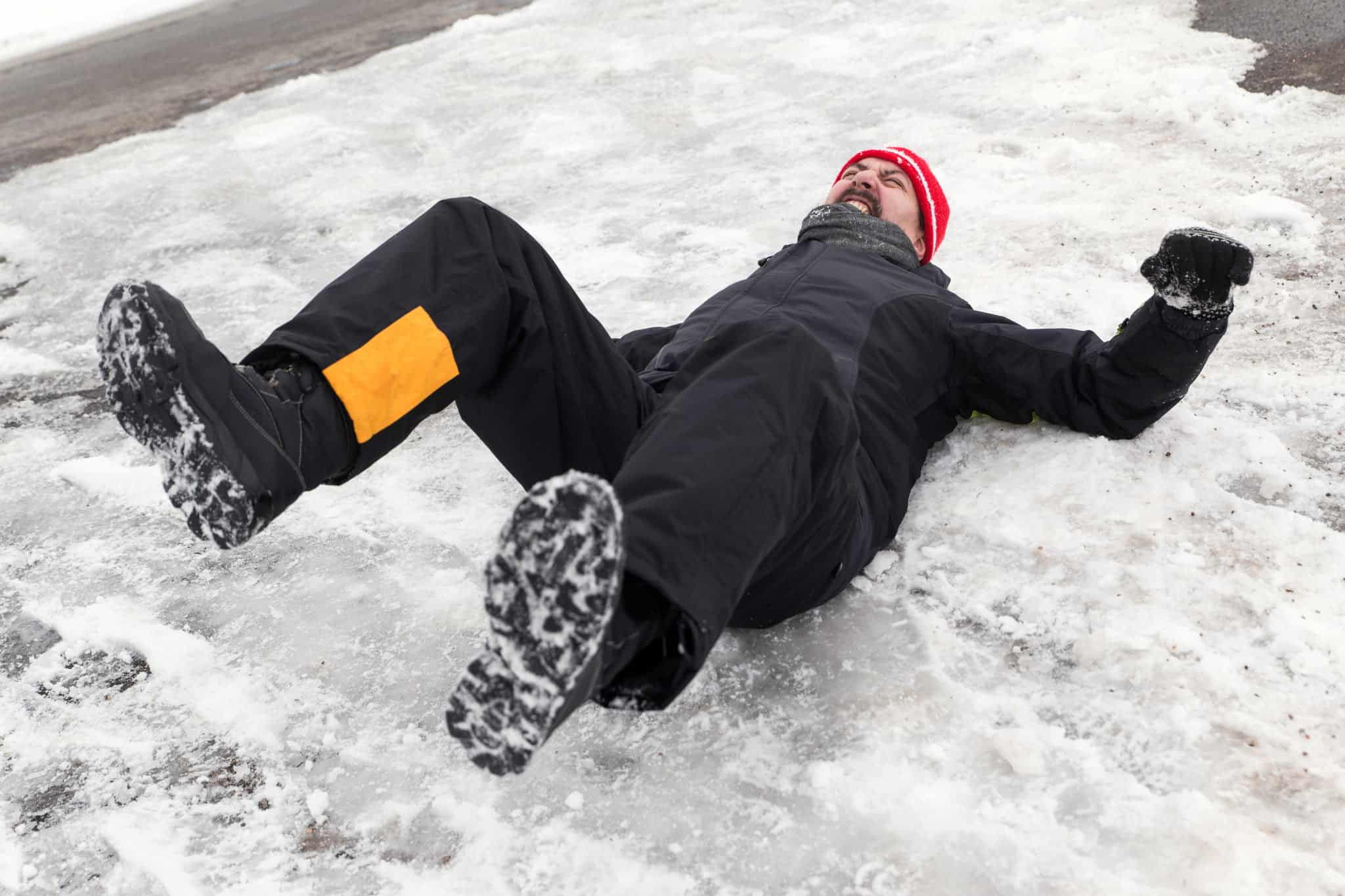How to avoid slipping on ice?
Living in Canada, our winters are filled with cold, snow and ice. Ice can be scary, since we don’t have the same level of traction as we do walking on asphalt or cement. Despite the unpredictable nature of ice, there are strategies and tips that you can follow to decrease the chances of slipping on ice.

Avoid Slick Surfaces
The first solution is to try to avoid walking on slick surfaces. You will want to visually scan the ground and walk on areas that might be rougher. You will notice that rougher surfaces don’t reflect the light as smoothly. Another option is to walk on packed snow instead of ice. For example, in an urban setting, you may be better off walking on packed snow beside a sidewalk rather than walking on the icy sidewalk itself. As well when the ice begins to melt, you will want to avoid areas where there is a thin layer of water on top of smooth ice. That thin layer of water will act as a lubricant, reducing the friction and making you more likely to slip.
Traction Aids
If you have no choice but to walk on ice, a good option is to wear a traction aid, otherwise known as spikes. These traction aids usually slip over your shoes and have 4 to 8 small spikes that pierce the ice as you walk over it, increasing friction and providing improved traction. You can read more about traction aids at a previous blog that we wrote.

Walk Like Penguins Do
If traction aids aren’t an option, we can do what the penguins do! Have you ever noticed how a penguin walks (waddles) on a slippery surface? The picture below shows us the difference between normal walking and penguin walking. In our typical walking pattern, we strike the ground with our heel and push off with our toes. Unfortunately, the leg which supports our body weight isn’t perpendicular to the surface of the ice, causing the foot to slide out from under us, resulting in a fall. If we look at how a penguin walks, they keep their centre of gravity over the supporting leg. This makes the body weight perpendicular to the icy surface, keeping us upright and more stable. Also, taking small steps helps ensure that we maintain the perpendicular angle to the icy surface. It’s also important to avoid walking with your hands in your pockets, as this decreases arm movements which your body uses to maintain balance.

Tuck and Roll
What do you do if you feel like you are slipping and will fall? Remember to “tuck and roll”. You want to make yourself as small as possible by tucking into a ball. This keeps the centre of gravity low and reduces the probability of getting injured, since we decrease the distance of the fall. You will want to keep your head and face away from the fall, as well as avoid putting out your hands to catch yourself, which can cause injuries to your hands, arms or shoulders. It is better to land on a fleshy part of the body to cushion the fall.
These strategies can help decrease the likelihood of slipping on ice, but there is no guarantee. The best approach is to take your time and to mind your surroundings. If you are truly concerned about slipping on ice and falling, the best option is to stay indoors and wait until the ice clears or melts.







